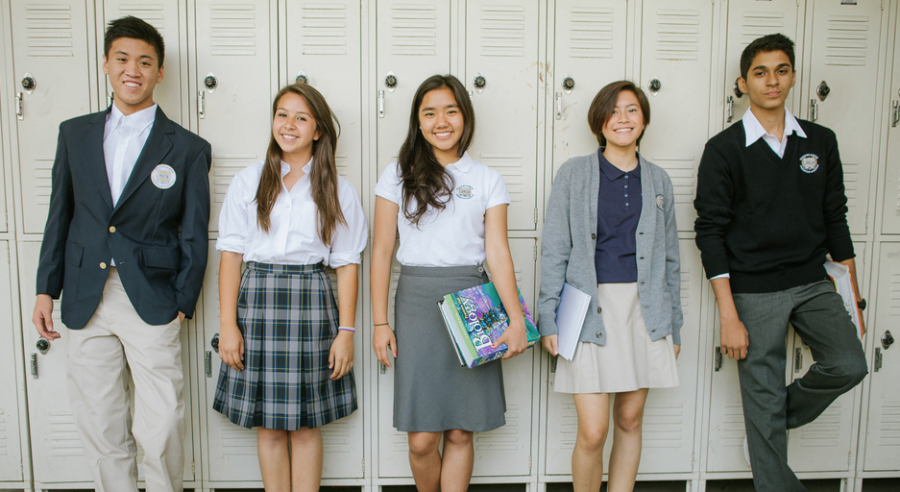Why schools should require uniforms
Courtesy of Statisticbrain.com
Officials remain divided over the effectiveness of school-wide uniforms.
In 2016 alone, 50.4 million students were enrolled in publics schools across America. According to the National Center for Educational Statistics, in the 2013 -2014 school year, 23 percent of students attending a public primary school and 15 percent of students attending public high schools were required to wear uniforms. Although, most private schools have already implemented school uniforms. Controversy is sparked from school boards over the nation debating on the effectiveness of school dress codes and uniforms.
Dress codes laws were first introduced into school systems after a Supreme Court case, Tinker vs. Des Moines Independent School District in 1969. Mary Beth Tinker, a 13-year-old student and her peers wore black armbands to symbolize a protest the Vietnam War in a school in Des Moines, Iowa. After given a warning, the students proceeded to be suspended because the armbands were thought to be disruptive to other children’s learning experience. Angry parents felt that the suspension went against the student’s freedom of speech, so the case was taken to court.
Tinker lost the court case when the District Court took favor of the school and stated that the armbands could be disruptive to learning. Not satisfied, the case was taken to the Supreme Court. 7-2, it was decided that freedom of speech and freedom of expression should not be compromised on school grounds unless it was deemed as inappropriate for a learning environment.
Dress codes in public schools are commonly found in areas with high poverty and crime rates. The use of uniforms could benefit low income families because their children were required to wear the same thing as their peers and cut costs of clothing immensely. However, a study in Long Beach, California showed that implementing uniforms in areas with high crime rates cause violence and drug rates to decrease
“When you have students dressed alike, you make them safer. If someone were to come into a building, the intruder could be easily recognized,” said Frank Quatrone, a superintendent of New Jersey.
Consequently, the use of school uniforms can disregard personal individuality and freedom of expression. Uniforms force students into equality which makes it hard for individuals to express themselves. Some may argue that the requirement of uniforms goes against the first amendment and the ruling of the Tinker vs. Des Moines Independent School District case.
In 1996, President Clinton made a push towards school dress codes.
“If it means teenagers will stop killing each other over designer jackets, then our public schools should be able to require their students to wear school uniforms.” said Clinton.
There is however a fine line between school uniforms and school dress codes. School dress codes tend to be more relaxed, but can be more restrictive than school uniforms in extreme cases.
In 2004, Zachary Guiles was suspended for having obscene images such as cocaine, drugs, alcohol, and razors on his shirt along with an image of President Bush. The American Civil Liberties Union agreed to take his case to the Supreme Court. Guiles felt as though his suspension was unnecessary and went against the First Amendment since Bush admitted to having problems related to Guiles shirt in the past. Guiles won the Guiles vs. Marineau case because the shirt was technically a political opinion and protected by the freedom of speech.
The issue of school uniforms and school dress codes, tend to have people leaning one way or another. In America, most public schools do not require a school uniform, but many do implement a dress code. As America becomes more diverse in political and social issues, Supreme Court rulings tend to be in favor of the students when it is regarding school dress codes or school uniforms.


Ben Dover • Aug 26, 2022 at 8:19 am
I think school uniforms would be a great idea in most schools.
Dylan C • Feb 17, 2022 at 3:11 pm
I think you should have a choice to wear uniforms or not.
WOJJs • Mar 10, 2021 at 12:01 pm
Nathaniyl school uniforms are lit.
Nathaniyl • Mar 9, 2021 at 10:54 am
Student should be able to express their feelings in what they wear not in what a school wants them to wear.